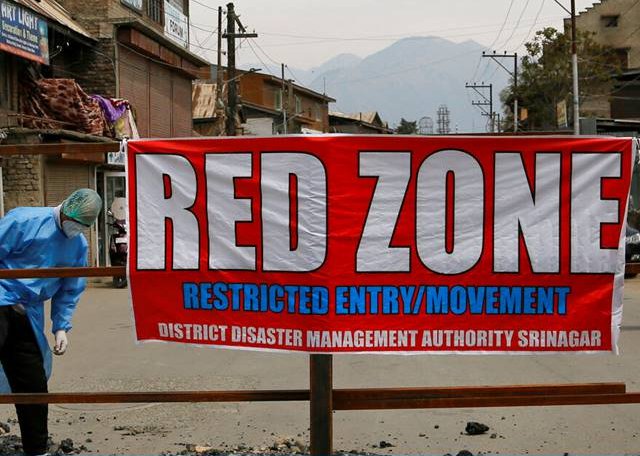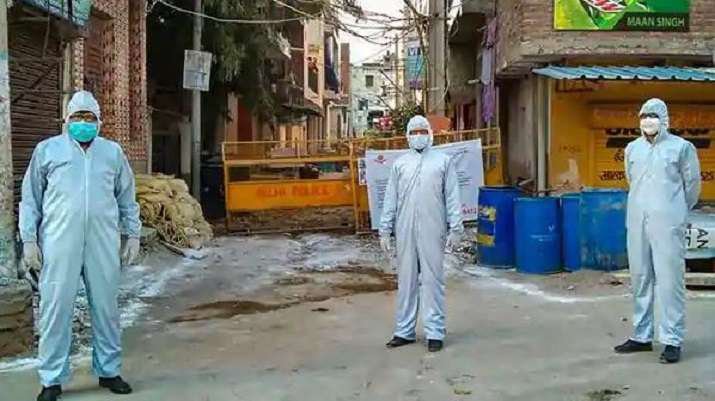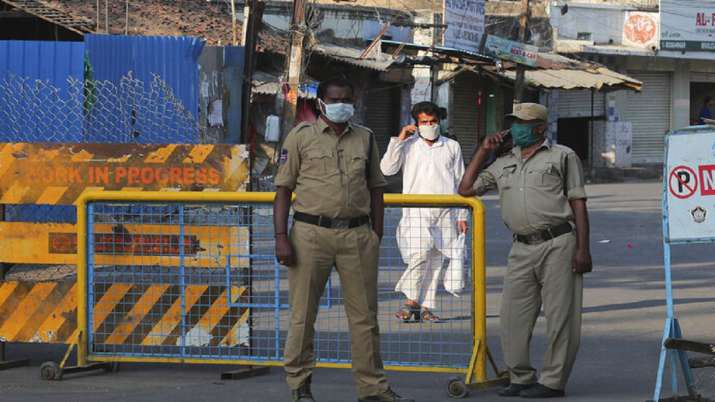The Prime Minister of India on April 14th extended the lockdown for another 21 days to curb the spread of the Covid-19 virus.
It is believed that extension is not the only step the government has taken. The government has decided to divide the country into different zones, red, orange and green zones. So what makes the red zone more important than the other zones?
An area would be categorised as the red zone if there are a sizable number of detected.

Covid-19 cases or areas which were declared hotspots. As of now, Chandni Mahal, Nabi Karim and Sadar Bazar in Old Delhi, G and D blocks of Nizamuddin West in the south-east district, and B block in north-west Delhi’s Jahangirpuri, are among the 77 containment zones declared by the Delhi government to contain the spread of the Covid-19.

The reason why these areas have been picked for greater curbs depends on the factors like, population density, creating awareness, cluster of infections, proximity to high-risk areas, and the inability to track the source of infection.
An order by the Delhi government’s directorate general health services, dated April 12 said that containment activity can be undertaken “even if there is a clustering of three cases.”
But the order also said that a final decision will be “taken on the ground by the district authorities as per the geographical boundaries of the area of the cluster”.

The idea behind this division is to stop the transmission chain of the virus. An area can be declared a containment zone, even if there is just one case but if we feel there is a threat of clustering or community transmission.
Say, for example, Chandni Mahal, Nabi Karim and Sadar Bazaar were sealed after small clusters of Covid-19 cases were reported in these areas.

Parts of Nizamuddin West neighbourhood were declared containment zones because of their proximity to Tablighi Jamaat headquarters in Nizamuddin Basti and Vardhaman Apartments in Mayur Vihar was declared a “red zone” even though there was just one reported case because the common areas and utilities of the society were found hard to protect from contamination.
A zone can be a block, a street, a plot, or just a building, while the lockdown puts in restrictions on everybody, the restrictions in these zones would be stricter.
Which means that people living in these zones are not allowed to step out of their houses at all and the essentials are being home-delivered to the people there directly by the authorities.

These zones are also subjected to the Delhi government’s enhanced safety protocols known as “Operation SHIELD”, where The S stands for sealing, H for home-quarantine, I for isolation and tracing, E for essential supplies, L for local sanitisation, and D for door-to-door checking.
While these parameters seem obvious and objective, the selection of areas where there are no more than one or two cases is more complicated, and based on subjective calls by health officials.
It is believed that one of the key parameters considered while deciding these areas would be the unclear source of infection, which could be a sign of “community transmission” which is the third stage of the spread.

Once stage three sets in, the next level is epidemic. There are several containment zones where only one case was reported like Gandhi Park in Malviya Nagar, and the slum cluster at South Moti Bagh, H and E blocks of Abul Fazal Enclave, Garhi village in East of Kailash, and Mahella Mohalla in Madanpur Khadar and Kalyanpuri, Khichripur and Pandav Nagar.
A majority of these areas are thickly populated. To break the chain of transmission of the virus, which made it necessary to declare them as containment zones and screen all the people even after the patients have recovered.

In some areas, the contact history of the patient is yet to be traced due to which chances of more testing positive are high.
The “densely populated” theme runs across at least 25 of the 47 zones and includes the working-class neighbourhoods of Kalyanpuri, Khichripur, Madanpur Khadar, Jaitpur Extension, Deoli and Sangam Vihar, where officials say the awareness of social distancing is limited as compared to the city’s relatively upscale colonies.

In south-west Delhi’s Mahavir Enclave, which was declared a containment zone on Sunday where a nurse working in an isolation ward was diagnosed last week.
Her two children and a neighbour also tested positive. “It’s a dense pocket where people interact frequently. So the risk of transmission is very high.

















